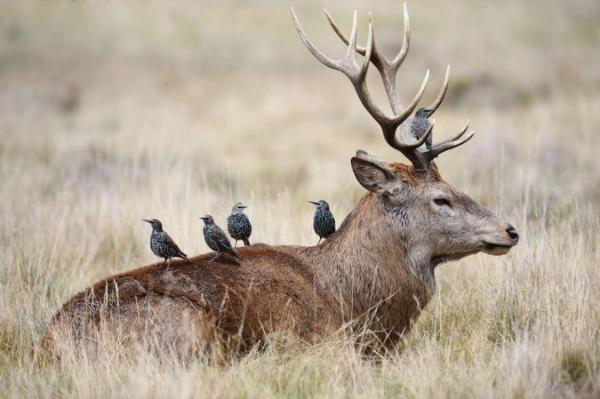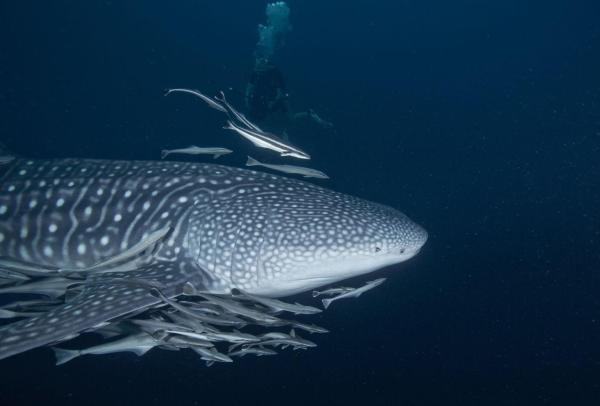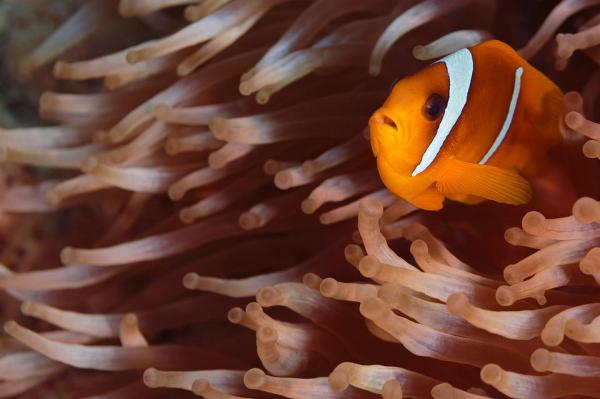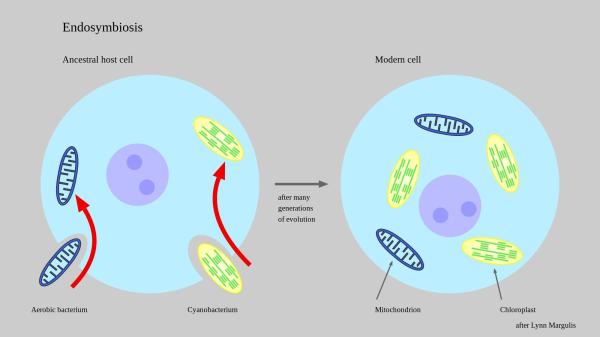
In nature we have a vast range of ecosystems, much of our understanding of which is limited. Throughout these ecosystems individual species create bonds and establish relationships, whether they be from their own species or that of another. From multicellular animals like us humans to the bacteria which lie within them, the diversity is incredible. In larger animals, we can see these relationships in a predator and its prey, parents and their offspring and many more complicated interactions which have less obvious purposes.
In this AnimalWised article we discover the definition of symbiosis as well as provide examples of how it exists in nature. You may know some, but others you may find a little surprising.
What is symbiosis?
The term ‘symbiosis’ was coined by the botanist, surgeon and microbiologist Heinrich Anton de Bary in 1879. His intention was to describe the coexistence of two or more organisms which are not closely related by the same phylogeny (the development of a related group of organisms). This means they don't belong to the same species and don't have beneficial exchanges per se. Current usage usually assumes that symbiosis means a mutual dependence with a positive outcome for all involved.
The association between these animals must be permanent and they can never be separated. Organisms which live symbiotically are known as ‘symbionts’. Some symbionts may benefit from the relationship, some may have detrimental effects and others will see no direct effect at all.
In these relationships, it an often happen that organisms are unequal in size and far apart in phylogeny. For example, there are many relationships between superior animals and microorganisms or between plants and microorganisms. Often these microorganisms live inside the individual.
Biology dictionary definition of symbiosis
The Oxford Dictionary of Zoology, the dictionary definition of symbiosis is as follows[1]:
General term describing the situation in which dissimilar organisms live together in close association. As originally defined, the term embraces all types of mutualistic and parasitic relationships. In modern use it is often restricted to mutually beneficial species interactions, i.e. mutualism. Compare commensalism; parasitism.

Types of symbiosis
Before we offer some examples of symbiosis, it might be helpful to break this quite general term into different categories. These include, but may not be limited to, the following:
- Mutualism: in a mutualist symbiosis, both parties benefit from the relationship. However, the extent to which each symbiont benefits can vary and is generally difficult to measure. The benefit of the individual symbiont receives from a mutual association must be considered according to how much it costs the other. There is unlikely to be an example of mutualism whereby both or all parties receive equal benefit.
- Commensalism: interestingly, this term was first described three years before that of symbiosis. Commensalism is a relationship in which one of the parties receives benefits without either harming nor benefiting the other. In the most extreme sense of symbiosis, the benefit of this symbiont is nutritional or protective.
- Parasitism: in this symbiotic relationship, one of the symbionts benefits at the expense of another. Although there are other types of parasitic relationships, nutrition is a common one. This is when a parasite gets food from the host for sustenance. The affects on the host vary, with some parasites being so pathogenic that they produce disease in the host almost immediately. In some associations, the symbionts have co-evolved to the point that the death of the host is not caused, resulting in much more prolonged symbiotic relationships.
Examples of symbiosis
Examples of symbiotic mutualism:
- Symbiosis of algae and coral: coral is an organism that grows well in poor nutrient areas in large part thanks to their symbiotic relationship with algae.The algae provides food and oxygen for the coral, while waste substances such as nitrogen and nitrogen dioxide helps sustain the algae.
- Symbiosis of clownfish and sea anemones: you are likely to have seen this relationship if you have every seen a nature documentary such as blue planet. The sea anemone is from the same family as jellyfish and similaryl have a stinging substance which is used to paralyze their prey. The clownfish benefits from the relationship because they get both protection and food. The food comes from the small parasites and dirt they eat from the sea anemone.
Examples of symbiotic commensalism:
- Symbiosis of silver fish and ants: the silverfish is an insect which lives in ant colonies and feeds off their supplies. However, they neither harm nor benefit the ants as they only eat a small portion of food which can be spared. To have this relationship, the silverfish must show they are not a threat otherwise the ants would kill them.
- Symbiosis of arboreal animals: animals which live in trees have a symbiotic relationship as they don't cause any harm to the tree, nor do they benefit the tree, yet they receive shelter and, often, food.
Examples of symbiotic parasites:
- Symbiosis of fleas on dogs: this is an easily observed example and one which seriously annoys both pets and their owners. Fleas use the dog as a place to live and reproduce, as well as feeding on their blood. Dogs do not benefit in any way, but can develop diseases spread by the fleas.
- Symbiosis of cuckoos and other birds: the cuckoo is a a bird which is a parasite as it abuses the nests of other bird species. When they arrive at a nest containing eggs, they displace them and then put in their own before leaving. When the original nesting bird returns, they rear the eggs without realizing they have been duped.
Examples of symbiosis in humans:
- Honeyguide bird and the Maasai: there is a bird in Africa which guides the Maasai people to bee hives which are hidden in trees. Humans scare away the bees and collect the honey. This leaves the nest free of bees and allows the bird to eat the leftovers.
- Humans and bacteria: both inside our bodies and on our skin, humans have a beneficial relationship with lots of different types of bacteria. Without them, our existence would not be possible.

Endosymbiosis
We cannot finish this article on symbiosis without mentioning the importance of symbiosis on the history of the planet. This has to do with how eukaryotic cells (animal and vegetable cells) originated and, consequently, life as we know it.
The endosymbiosis theory, in a nutshell, explains that it was the union of two prokaryotic cells (e.g. bacteria) which gave rise to other cells. On one hand we have chloroplasts (the organelle responsible for photosynthesis in plant cells) and mitochondria (organelles responsible for cellular respiration in both plant and animal cells) on the other. The symbiosis between all sentient creatures and plant life is one which allows life to exist on planet earth.
The study of symbiosis has become a scientific discipline in its own right in recent years. It has been argued that symbiosis is not a fixed evolutionary relationship, but can manifest itself in many forms such as commensalism or parasitism. A stable mutualism in which the contribution of each agency involved guarantees their own future.

If you want to read similar articles to Symbiosis Definition and Examples, we recommend you visit our Facts about the animal kingdom category.
1 http://www.oxfordreference.com/view/10.1093/oi/authority.20110803100546707